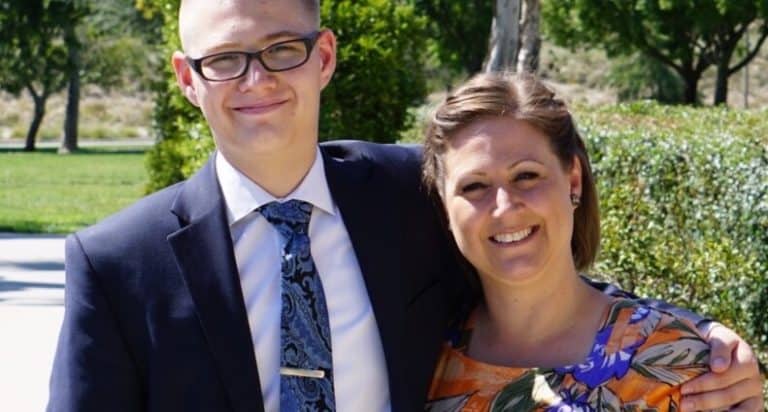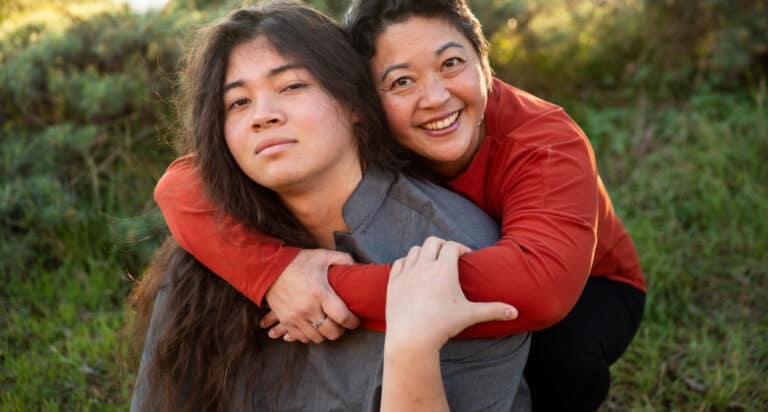It seems to be a trend on TikTok and all over young people’s Snapchat stories. Diagnoses of anxiety disorders have been on the rise over the past few years, and I’ve seen more teens in my private practice with the complaint than ever before.

But what an “anxiety disorder” exactly? And is it a new phenomenon for teens?
Before we can talk about anxiety as a disorder, we must understand its nature. Anxiety is a human emotion, like sadness, fear, anger, and joy. It’s normal to feel anxious when we are about to try something new or when we sense something isn’t right. It’s been with us since the beginning of humankind, and we experience it in our bodies and often what feels deep into our souls.
Anxiety is a response to stress and can be useful
Anxiety is physiological and is a stress response. It initiates the body’s autonomic nervous system, which triggers its “fight or flight” response. We get ready to run or to do battle to survive. This was useful during the Paleolithic period when humans lived in caves and struggled to survive daily. And it can be helpful today in many situations. I explain this as “adaptive anxiety” to the teens I work with.
For example, you get anxious when you are about to cross a busy street, and that anxiety puts you on high alert so that you are vigilant as you dart across, ensuring you don’t get hit by a whizzing car. Or you get anxious before a big test, so your body creates a surge of adrenalin to help you stay up and study to do well.
You are more alert and sharp as you sit down to take the test. So if someone comes to me complaining of anxiety, I explain to them that the goal is not to get rid of it but to acknowledge it, understand its uses, and identify if it has become a problem and how it can be managed.
But sometimes anxiety can be debilitating
Because sometimes the anxiety stops you in your tracks and limits what you can achieve. Sometimes that feeling of anxiety floods your system, and you don’t know why. Or the stressor in your life is removed, but the feeling of anxiety lingers.
Sometimes the anxiety is stronger than what the situation calls for — and it’s debilitating. That “flight” response can cause an avoidance of activities, intense fear, and isolation. The “fight” response can cause extreme irritability, aggression, and conflict in interpersonal relationships. Anxiety is characterized as a disorder when it becomes overwhelming, pervasive, and debilitating.
There are several types of anxiety disorders
Generalized anxiety disorder (GAD):
Generalized anxiety disorder (GAD) is characterized by chronic and pervasive anxiety, even without identified stressors, and includes excessive worry and intrusive thoughts.
Panic Disorder:
Panic disorder is an anxiety disorder that causes intense and repeated bouts of fear (with and without triggers) that cause severe physical symptoms such as shaking, sweating, difficulty breathing, and dizziness.
Social Anxiety Disorder:
Social anxiety disorder (sometimes called social phobia) is defined by excessive social anxiety and self-consciousness in social situations. It can be general or specific (for example, speaking in front of groups of people.)
Specific Phobia:
Specific phobias are intense, often irrational fears of situations, objects, or people that pose little danger to the individual experiencing the fear. There are many types of specific phobias.
Post-Traumatic Stress Disorder (PTSD):
PTSD develops after exposure to a specific traumatic event or time in which severe physical and/or emotional harm was threatened. PTSD can occur after violent attacks, accidents, natural disasters, prolonged exposure to abuse, and military combat. Symptoms are physiological and emotional.
Obsessive Compulsive Disorder (OCD):
OCD is characterized by recurrent and intrusive thoughts (obsessions) and specific, repetitive behaviors (compulsions) that the person cannot control or stop. Typical compulsions include hand washing, performing multiple checks on locks, lights, or household appliances, performing rituals (i.e., taking three steps back the forward before entering a room), touching objects in a particular order, and hoarding, among others. If the individual cannot perform these behaviors, the obsessive thoughts increase, and anxiety becomes unmanageable.
Help is available for your teen
If your child -or you- are experiencing any symptoms of an anxiety disorder, there is help available. Talking to a therapist with an anxiety experience can be invaluable, and you can learn coping strategies and tools to help calm the storm in your brain and body.
Medication may also help as well. Although these disorders are common, many more teens experience “normal” anxiety in response to environmental and internal stressors. Understanding what anxiety is and its purpose goes a long way in helping to manage it.
As the college selection and application process looms, you and your teen will experience some anxiety. It’s simply a response to the stress of the situation. This anxiety is expected and can be managed with the right tools (and even used to your benefit)!
More Great Reading:
5 Ways Parents and Teens Can Cope With College Application Anxiety
Why Stress and Anxiety in Teens Can Be Healthy: A Psychologist Explains
Resources:
National Alliance on Mental Illness (NAMI); 800-950-NAMI (800-950-6264)
Anxiety and Depression Association of America (ADAA); 240-485-1001









